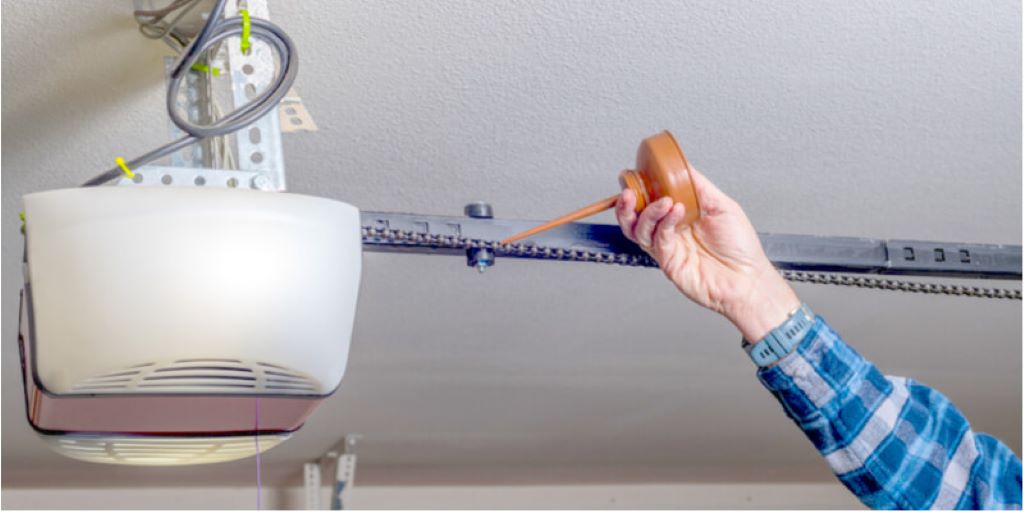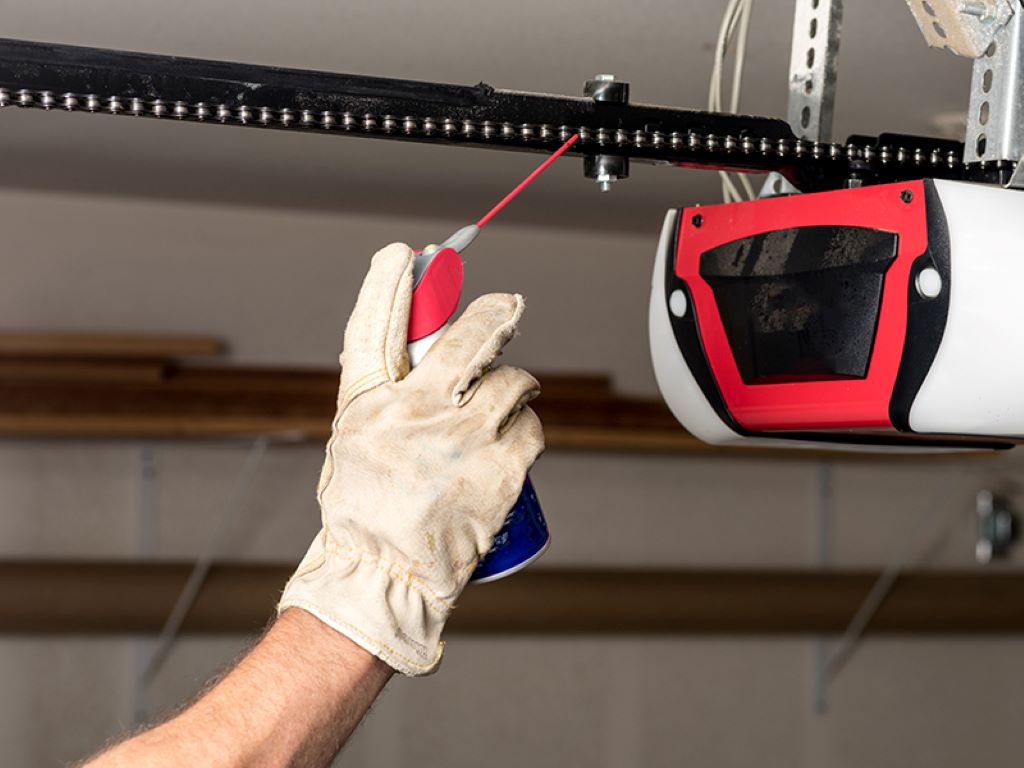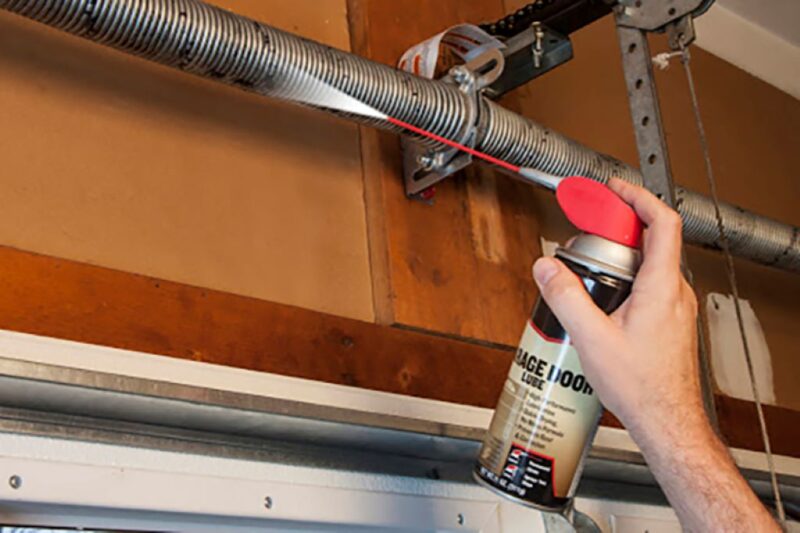Having a properly functioning garage door is essential for both convenience and security. The springs on your garage door allow it to open and close quickly. However, like any other moving part, the springs need regular maintenance and lubrication to keep everything running smoothly. Properly oiling your garage door springs is an easy DIY task that can extend the life of your springs and prevent annoying squeaks and other issues. This guide discusses when and how often to oil garage door springs, what type of oil to use, safety tips for working on your garage door, and a step-by-step process to lubricate your springs properly. Let’s get started!
When to Oil Garage Door Springs

Garage door springs should be oiled anytime they start making noise or at least once a year as part of an annual maintenance routine. Here are some signs that it’s time to lubricate your springs:
- Squeaking or grinding noises – If your door makes high-pitched squeaks or grinding noises when opening or closing, this likely means the springs need lubrication. The noises happen when the coils of the spring rub against each other. Lubricating them will minimize friction.
- Vibration – You may notice your garage door vibrates excessively when opening or closing. This vibration is caused by friction between dry springs. Oiling them helps dampen the vibration.
- Difficult to open or close – Does your garage door feel like it’s sticking when you try to open or close it? Resistance when operating your door can indicate dry springs that need to be oiled. Lubrication will reduce friction and make the door more straightforward to use.
- Rust spots – Check your springs for any rust spots. Rust causes more friction and can accelerate wear and tear. Oiling your springs helps protect them from rust buildup.
- Slower operation – Has your garage door opened and closed slower than usual? This can happen when dry springs start stiffening. Oil will soften them up and improve operation.
Even if your springs show no signs of needing lubrication, it’s a good idea to oil them as part of an annual maintenance routine. Lubricating once a year ensures your springs stay in optimum condition.
How Often to Oil Garage Door Springs
Here are some general guidelines for how often to lubricate your garage door springs:
- Once a year – Lubricating once a year is recommended for preventing wear and keeping springs operating smoothly. This yearly oiling can be part of a larger annual garage door tune-up.
- Every six months – Springs that see frequent use may benefit from lubrication every six months. If your garage door goes up and down multiple times daily, lubricating twice a year helps counteract the extra wear.
- When installing new springs – New springs should be lubricated before installing them. The initial lubrication protects against early wear.
- After cleaning or servicing – Oil springs after performing any cleaning, adjustment, or service on your garage door. This helps counteract any added friction.
- When the door becomes noisy – As mentioned previously, squeaks or grinding noises indicate it’s time to lubricate. Oil noise springs right away to stop the annoying sounds.
- After harsh weather – Lubricate your springs after exposure to elements like heavy rain, wind, and snow. This helps displace any moisture and prevents rust.
The climate you live in can also impact how often to lubricate springs. Lubricating twice a year is recommended in hot and humid areas since the extra moisture can cause springs to wear out more quickly. Those in more relaxed, less humid climates can often get by with yearly oiling.
What Type of Oil to Use on Garage Door Springs
Choosing the correct type of lubricant is essential for proper maintenance and operation of garage door springs. Here are some key factors to consider when selecting an oil:
- Lightweight oil – Opt for a light, low-viscosity oil. Thinner oils are better at penetrating tight spaces between the coils. Look for oils labeled “penetrating” or with a viscosity rating of 5W or 10W.
- Mineral oil – Mineral oil, sometimes called “white oil,” ” works well for garage door springs. It has excellent viscosity and lubricating properties under pressure.
- 3-IN-ONE oil – Most 3-IN-ONE oils combine lightweight mineral oil with additives to inhibit rust and corrosion. They provide ideal lubrication and protection for springs.
- Machine oil or motor oil – These thicker oils, as well as lightweight mineral oils, do not penetrate and lubricate. Only use them if you have no other options.
- Silicone spray – Silicone sprays like WD-40 work for temporary lubrication but dry out quickly. They are less effective for long-term oiling.
- Grease – Grease and heavy lubricants should not be used. Grease attracts dust and dirt, which can impede spring function.
- No motor vehicle oils – Never use old engine oil, transmission fluids, or other oils. They contain additives that can damage and deteriorate the metal in springs.
A quality mineral oil or 3-IN-ONE oil applied with a dripper or syringe ensures thorough lubrication of garage door springs.
Safety Tips for Oiling Garage Door Springs
Working on garage doors and springs can be dangerous if proper safety precautions are not followed. Here are some critical tips for staying safe:
- Use safety glasses and gloves – Wearing safety glasses protects your eyes from oil drips and spring breakages. Gloves help grip slippery oils and protect hands.
- Keep a first aid kit nearby – Have bandages, disinfectants, and other supplies on hand in case of any cuts or injuries.
- Avoid loose clothing – Tuck in or tie back any loose shirts, jackets, or jewelry that could get caught in springs or moving parts.
- Use proper tools – Always use the correct tools, such as an oil dripper or syringe, for applying lubricants. Improper tools can damage springs.
- Check for corrosion – Inspect springs for any excessive rust, pitting, or corrosion that can cause pressure breakage. Replace severely corroded springs.
- Test safety systems – Manually test that all safety systems, such as auto-reverse, are operational before oiling springs. This ensures they activate correctly if needed.
- Secure the door – Fully close the garage door and lock it in place before servicing springs. Use C-clamps or vise grips to secure the door tracks firmly as a backup precaution.
- Avoid working alone – Have someone present to assist in case of any malfunctions or accidents when oiling springs.
- Disconnect power – Turn off electrical power via the garage door opener breaker before lubricating the springs. This prevents accidentally activating the opener during service.
Proper safety steps go hand-in-hand with correctly lubricating springs for safe, trouble-free operation.
How to Oil Garage Door Springs

Okay, now that you know when and how often to lubricate your garage door springs, the type of oil to use, and essential safety tips, let’s go through the entire step-by-step process:
Materials Needed:
- Safety glasses
- Gloves
- Proper oil (lightweight mineral oil or 3-IN-ONE oil recommended)
- Oil dripper or syringe
- Old rags/towels
- Bucket (for storing used rags)
- C-clamps or vise grips (to secure door)
- First aid kit
Step 1: Inspect the springs
Before lubricating springs, inspect them closely for any signs of wear or damage:
- Check for rust spots or excessive corrosion
- Look for cracks or pits in the metal
- Examine welds or end loops for any weak spots or fractures
- Test the spring tension by operating the door manually
- Replace any springs that are badly damaged or worn out
Step 2: Disconnect power
To prevent the garage door opener from activating during service, locate the circuit breaker or power switch that controls it. Flip the breaker to the “off” position or completely disconnect the power to the opener.
Step 3: Lubricate the springs
With power disconnected, fully close the garage door. Use C-clamps or locking pliers to clamp both vertical door tracks in place as an extra precaution. The door should be completely secured in a closed position throughout the process. Put on safety glasses and gloves. Position your lubricant and tools within easy reach. There are two main spring types:
Extension springs:
- Apply lubricant to the entire length of the stationary center shaft: oil pulleys and end bearings.
- Next, oil each spring coil where it contacts other coils. Use an oil dripper or syringe to apply oil down the interior of the springs, allowing it to run between the coils.
- Manually rotate the springs back and forth as your oil to distribute the lubricant evenly.
Torsion springs:
- Locate the stationary spring retainer mounted to the header above. Oil the bearings where the shaft goes through the retainer.
- Apply lubricant onto the torsion spring coils, where they rub together inside and out. Rotate the springs during oiling.
- If your springs have grease fittings, use a grease gun to inject lubricant into the bearings. Otherwise, manually apply oil to the bearings.
- For drums or spools, oil contact points between the drum and cable drum.
Focus on oiling areas where squeaks or grinding occur. Use rags to wipe up any excess drips. Proper lubrication will make the springs quiet, pliable, and responsive. Reapply more lubricant to any still-dry areas.
Step 4: Operate and re-lubricate
Once sufficiently lubricated, unclamp the door tracks and restore power to the opener. Open and close the door a few times to distribute the oil. Re-oil any areas that still feel dry or squeak. For stubborn squeaks, work lubricant back and forth into the area with a rag to fully penetrate.
Step 5: Clean up oil drips
Use rags to wipe any scattered oil drips on the floor or other garage surfaces once the oiling is done. Dispose of dirty rags in a sealable container to prevent fires. Avoid using concrete cleaners, which can damage the floor. A degreasing cleaner or dish soap removes oil spots from the substantial well.
And that’s it! Properly lubricating your garage door springs is a simple, straightforward process with the proper preparations and safety steps. Regular oiling extends the lifespan of springs and keeps your garage door operating quietly and smoothly for years to come. Be sure to re-lubricate as needed or at least once a year.
Frequently Asked Questions
- Can I use WD-40 to lubricate garage door springs?
WD-40 is not the ideal lubricant for garage door springs. While WD-40 can temporarily quiet squeaky springs, it dries out and evaporates quickly. For long-lasting lubrication, use a lightweight mineral oil or spray lubricant specifically made for garage door parts.
- How do I know if my garage door springs need tightening or replacing?
Signs that your springs need adjustment or replacing include the door feeling heavy or challenging to operate, significant imbalance, or not opening or closing fully. Severely corroded or damaged springs should be replaced. Consult a professional if you are unsure about spring maintenance.
- Is it safe to lubricate torsion springs while installed?
Torsion springs are under extreme tension and can be hazardous if mishandled. Only attempt to lubricate springs if you are experienced working with torsion spring systems. Disconnect power to the opener before servicing. Securing the door in the down position is strongly advised.
- How can I oil garage door springs if they are hard to reach?
Use an oil dripper or needle nose applicator to extend your reach and lubricate hard-to-access springs. Position a bucket beneath to catch drips. Strap wands can also help apply lubricant to springs and rollers above.
- Can I use an aerosol spray lubricant instead of liquid oil on the springs?
Yes, an aerosol spray for garage doors can lubricate springs. Sprays make it easier to penetrate inside the springs. Just avoid inexpensive multi-use sprays, which can contain additives harmful to springs.
Conclusion
Regularly lubricating your garage door springs is one of the simplest yet most beneficial maintenance tasks you can do. Taking time once or twice a year to oil your springs properly prevents annoying operating noises, extends spring lifespan, and ensures your door opens and closes safely for years. Use the proper lightweight oil, disconnect the power to the opener, securely brace the door, and exercise caution when working near springs. Repairing a garage door panel with aluminum siding requires precision and care, and just like employing safe habits and the appropriate lubrication techniques keeps your garage door springs in optimal condition, addressing panel repairs with diligence ensures the longevity and functionality of your entire garage system. Consistent maintenance, whether it’s for springs or panels, is well worth the minimal time and effort.

